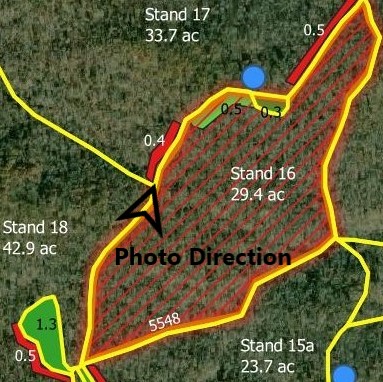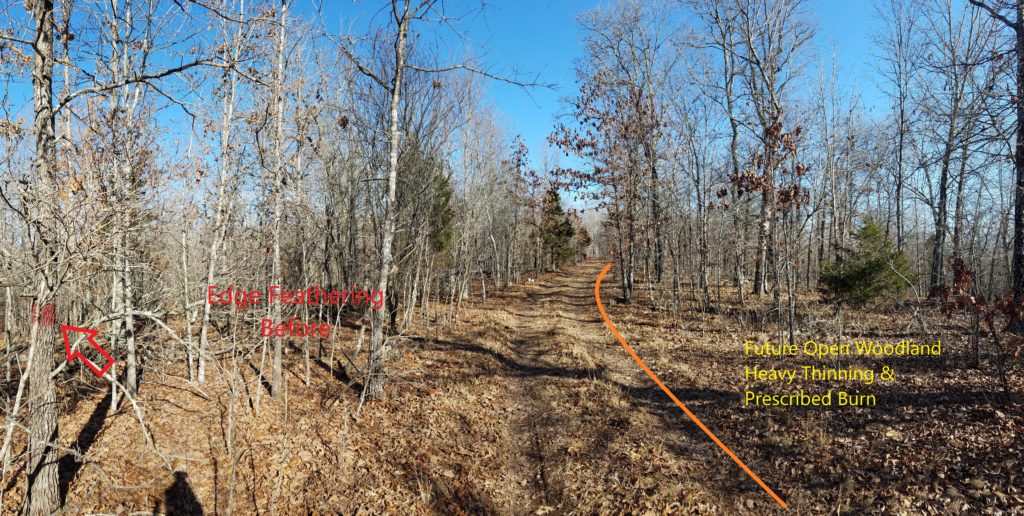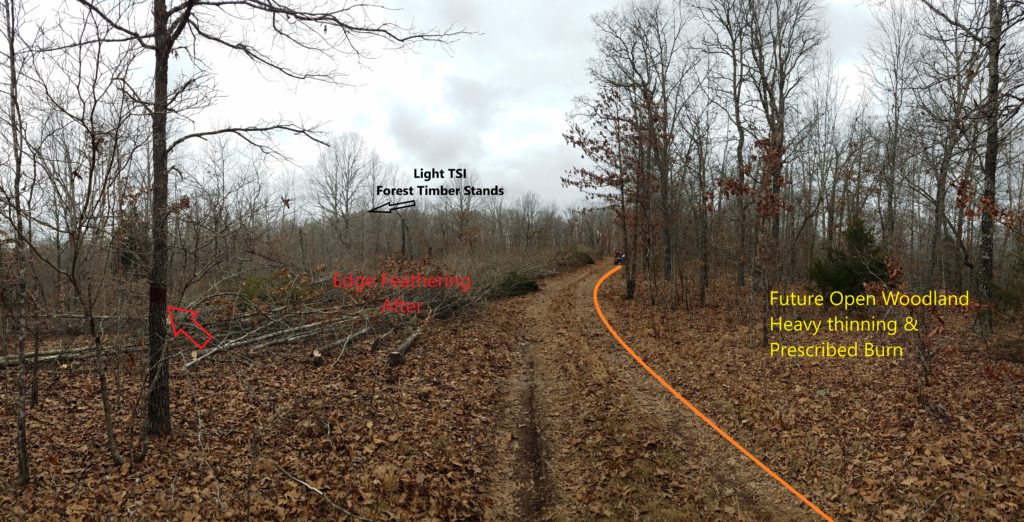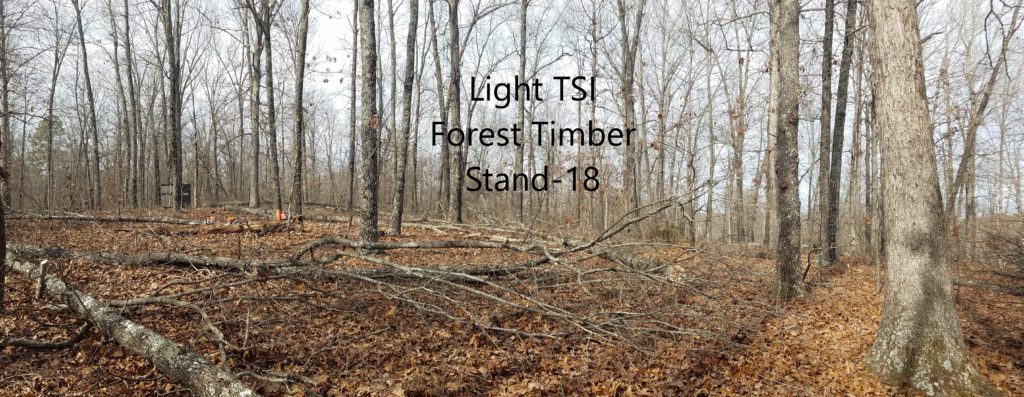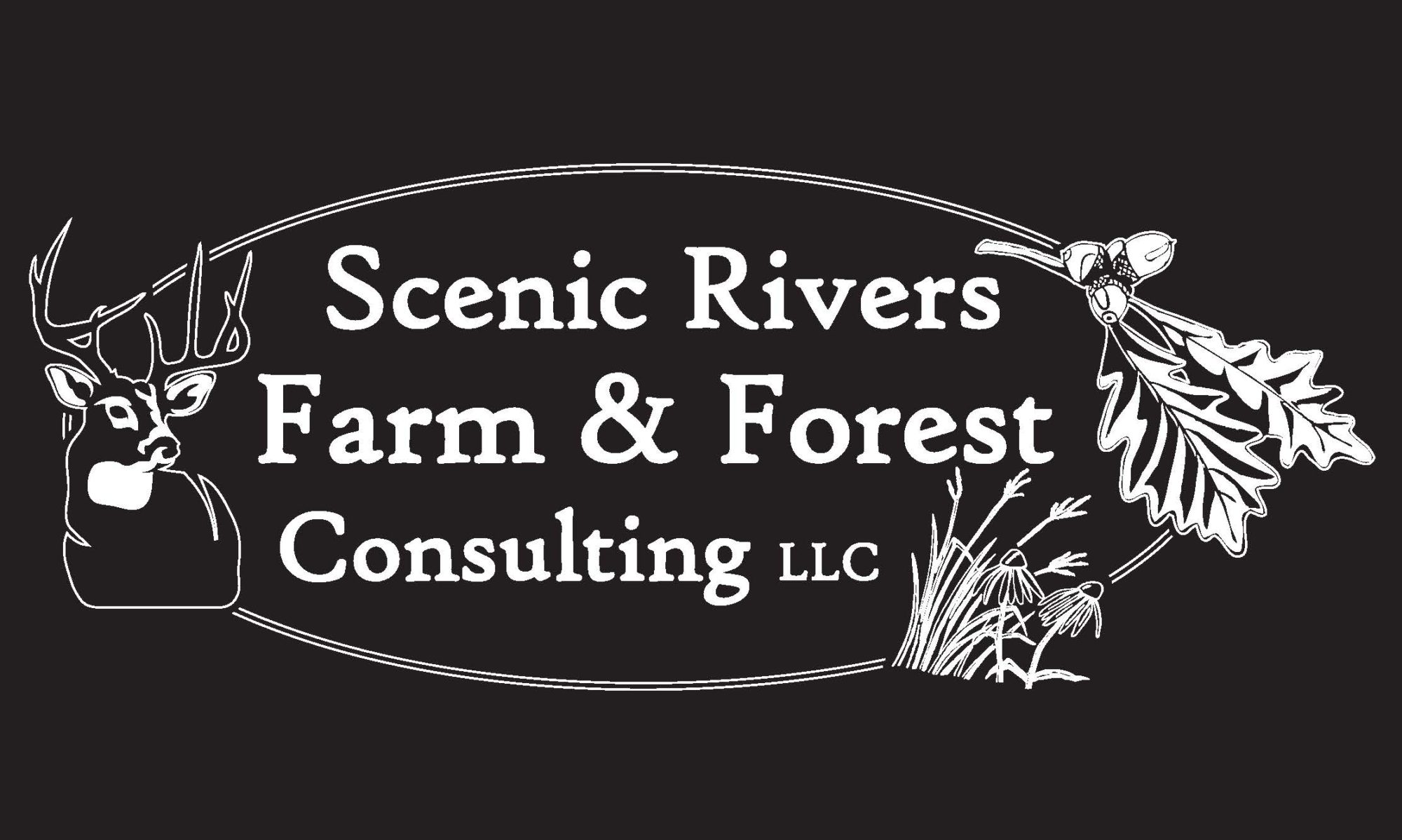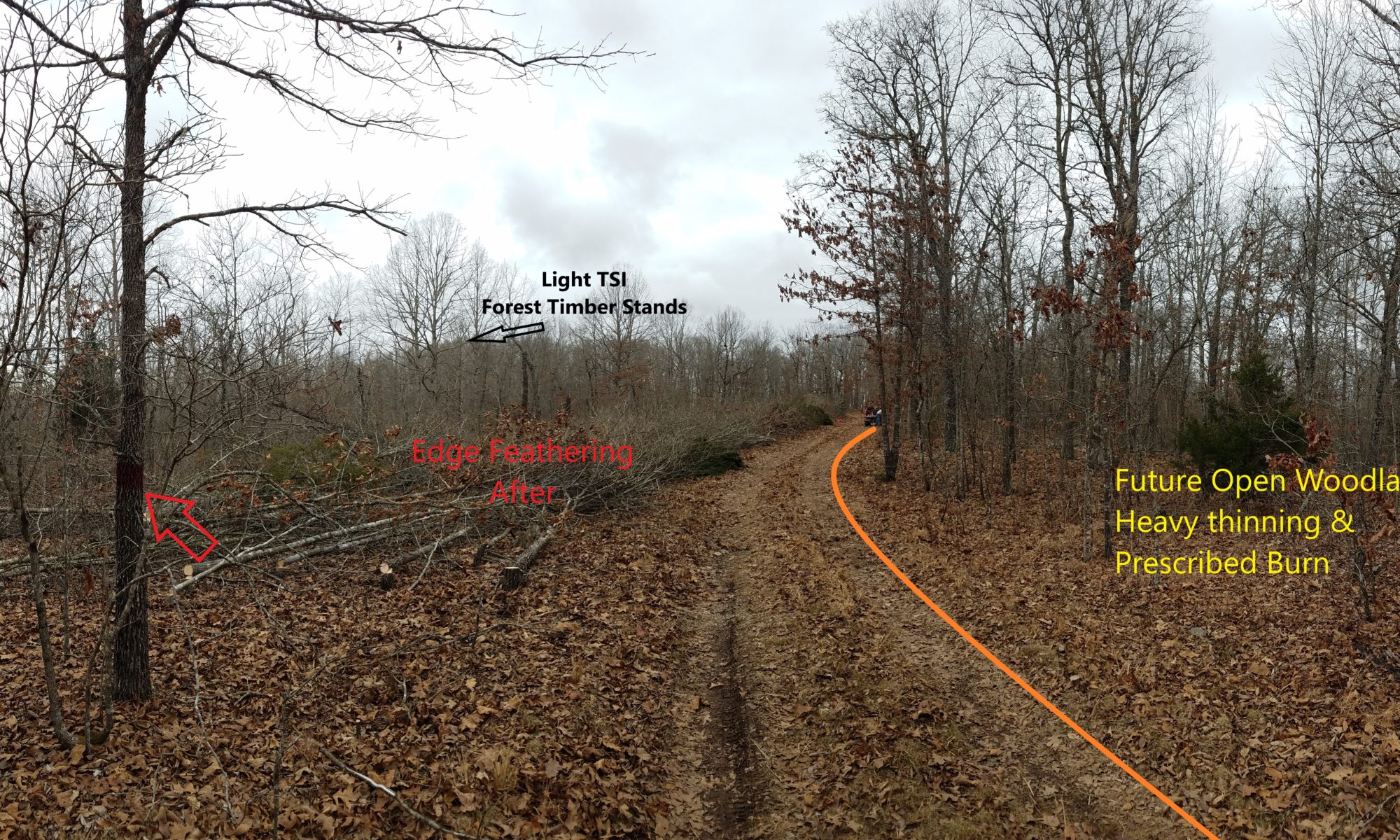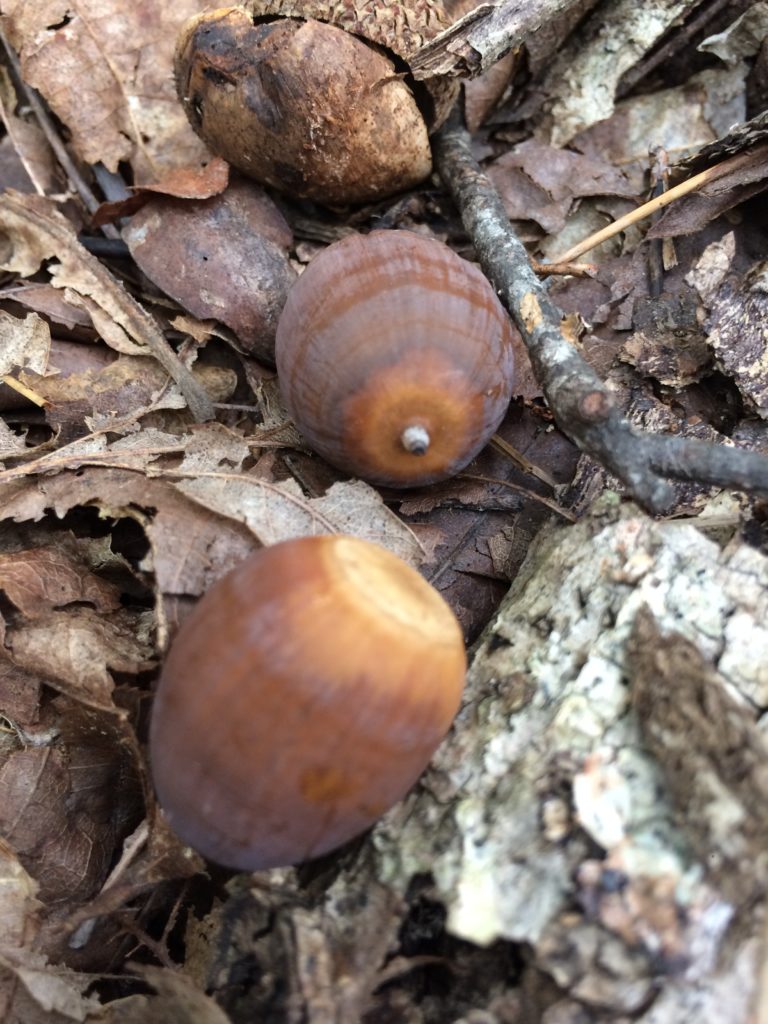These past few weeks we have been starting to implement a forest management plan that I developed for a landowner last year. His goals were to improve the timber and improve deer and turkey habitat. WE CAN HELP!
He started off with a several hundred acre block of trees that were in varying degree of health and quality depending on topography and past land use. We took detailed inventory of the whole property and then broke up the land on paper planning to:
- Increase Forest Health and productivity where good growth could be supported by identifying timber stands and performing a combination of TSI and Crop Tree Release on the stands to improve timber growth and wildlife habitat.
- Increase Wildlife Habitat in areas where forest productivity is poor by managing them as Open Woodlands by thinning them to let light to the woodland floor, and then implementing Prescribed Fire to stimulate and increase green vegetation and tender woody sprouts.
- Increase Habitat Edge by creating habitat transitions between certain management stands using Edge Feathering to increase habitat diversity.
- Increase Wildlife Food Production and Water Availability with food plots and strategically placed water sources
Today, I want to focus on what TSI and Edge Feathering looks like on the ground.
In ecology, Edge Effects are changes in community structures that occur at the boundary of two or more habitats.
